Our readers' questions about the war, answered. Vol. 6
Editor's note: We asked members of the Kyiv Independent community to share the questions they have about the war. Here's what they asked and how we answered. Join our community to ask a question in the next round.
Read our previous answers here, here, here, here, and here
What do the Ukrainians think of the "Peace Plan" that China proposed about a year ago? Would they feel comfortable if China were to be the country that brokered some kind of accord?
Answer: – Ukraine is on board with any peace plan that clearly states that Ukraine keeps all of its internationally recognized territories, including those occupied since 2014. The majority of Ukrainians are unwilling to negotiate territorial concessions, and the Ukrainian government will lose support if it begins peace talks that open the door for Ukraine potentially losing its territories and the people who live there.
The main reason Ukraine supports only four out of 12 points that are laid out in the Chinese plan is that an immediate ceasefire without the withdrawal of Russian troops from Ukraine means that the territories currently occupied would be de facto lost.
According to the people we spoke to in the President's Office, Kyiv is actively working to bring China to the Peace Summit in Switzerland in mid-June and to help align China's position with that of Ukraine and the West. For Ukraine, China is a key force that can help end this war, as the country is the primary gateway for Russia to receive dual-use goods that are then used to wage war on Ukraine.
Unfortunately, China feels comfortable in its current position and doesn't have an incentive to help end the war on terms comfortable for Ukraine and its people. – Oleksiy Sorokin, deputy chief editor
Read also: While Xi tours Europe, China feeds Russia’s war machine
Would membership of NATO and the European Union be an acceptable trade for territory if it meant peace?
Answer: – No. – Oleksiy Sorokin, deputy chief editor
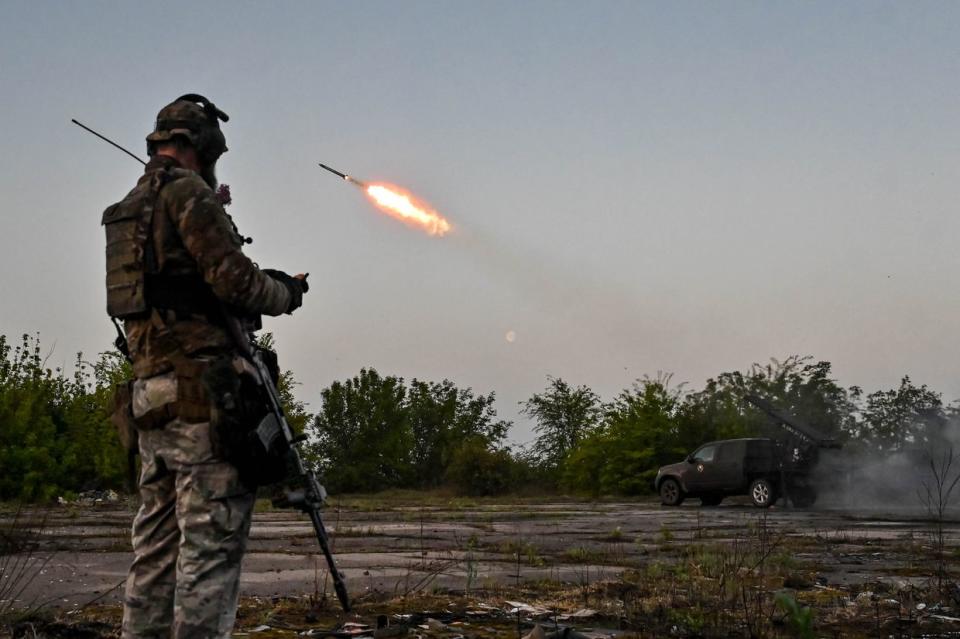
Does Ukraine have any plans for new offensives?
Answer: On one hand, I am not kept in the loop about Ukraine's strategic plans, and that is a very good thing. On the other hand, I definitely hope not, at least not for a while. One thing that has been proven over and over again since the last successful Ukrainian counteroffensives in November 2022 has been the defender's advantage. No matter how much the attacking side prepares and saves up manpower and ammunition, the cost in attrition for each treeline or each kilometer is going to be significantly higher than the losses on the defending side, especially if the enemy, as the Russians do very well, has dug well-prepared lines of defense.
One can argue whether or not Ukraine's large-scale counteroffensive last summer was the right decision at the time, but in hindsight, the hard truth is that Ukraine spent a lot of valuable ammunition, equipment, and, most importantly, manpower, for no strategic gain, and those resources are sorely needed now. At this point, a major new Ukrainian counteroffensive can only be successful if it is carried out by experienced, well-equipped, and well-coordinated units against a defending Russian force that has had its numbers and overall combat effectiveness significantly degraded. That can only happen, in theory, if Ukraine can hold a resolute defense, chew up Russian forces at minimal loss to themselves for months on end, and bring in enough fresh manpower to replenish and rotate its own degraded units. We are a very long way from such a scenario for now. – Francis Farrell, reporter
Read also: Russia’s new Kharkiv offensive pushes Vovchansk to the brink of annihilation
Is Ukraine ready for the next likely Russian offensive?
Answer: Russian forces are on the offensive right now, and they have been since their attempt to take Avdiivka by storm in October last year. The two main Russian axes of advance, pushing northwest of Avdiivka and west of Bakhmut to Chasiv Yar, both align squarely with Russia's minimal strategic goal of taking all of Donetsk Oblast. If Russian forces can find success on both those axes, the area between them, around Toretsk and Niu York, could find itself nearing encirclement, while losing Chasiv Yar could put cities like Kramatorsk and Sloviansk in range of Russian tubed artillery.
As for a theoretical "next likely offensive," now we see that it has begun, the new offensive on Kharkiv from just across the border. On one hand, this doesn't make too much immediate sense for Moscow on the surface, as the contact line here is well-fortified (at least, that's what they keep telling us), let alone the huge losses that trying to assault a city like Kharkiv itself would incur. On the other hand, Russia is well aware that Ukrainian forces continue to suffer an acute manpower shortage, which won't be resolved until large numbers of new soldiers drafted under the new mobilization law can be trained and brought to the front line. If the manpower situation deteriorates further, an attack in this area could be plausible as a way to create even more dilemmas for Ukraine, already short on reserves to deploy. – Francis Farrell, reporter
You have said that the Ukrainian soldiers have not been getting sufficient training, nor sufficient rest. Is the training process improving?
Answer: All this depends on how effectively Ukraine can mobilize and train new soldiers. With units already overstretched and depleted, they can only be rotated out for proper replenishment if they have fresh ones replacing them. This work is slowly improving, not fast enough for now, but it is expected that it will get more serious, not only thanks to the new draft law on mobilization, but simply out of necessity. – Francis Farrell, reporter
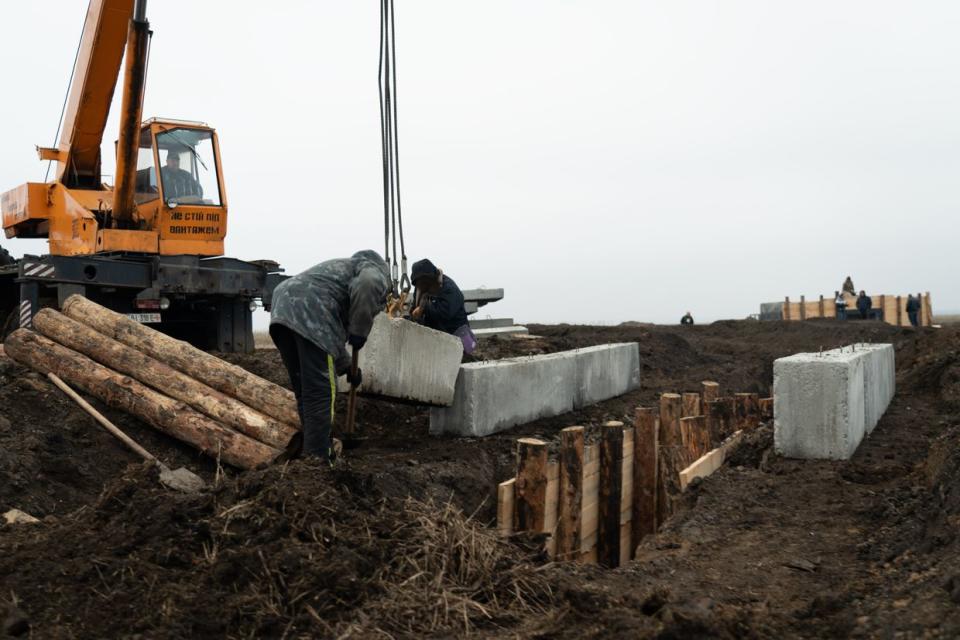
Is the government getting organized for long-term societal response to veterans and wounded?
Answer: Ukraine's Ministry for Veterans Affairs offers various services for war veterans, including free medical care and special medical treatment, financial assistance, and more. In terms of psychological rehabilitation, soldiers and war veterans can turn for help to the psychological rehabilitation centers overseen by the Veterans Affairs Ministry and the Health Ministry. Most of them are located in Kyiv Oblast.
However, an audit by the Ukrainian NGO Barrier-Free found that the Veterans Affairs and Health Ministry do not have sufficient resources to meet the increasing demand.
Also, a recent poll showed that among the challenges faced by veterans who return from war, respondents indicated problems with physical health and access to medical care, and a lack of inclusivity for people with disabilities to be the most pressing problems.
Luckily, many local charities provide veterans with psychological assistance, rehabilitation, and prosthetics, among other types of assistance.
At the same time, treating wounded soldiers remains a pressing issue. Dozens of veterans, military personnel, and civilian volunteers helping the military told the Kyiv Independent that Ukraine's military medical system is "fundamentally broken on every level."
"As a reward for fighting Ukraine's battles, veterans have to fight a callous, sometimes corrupt, outdated bureaucracy that's often working against them, while they are at their most physically and psychologically vulnerable," the Kyiv Independent's reporters Igor Kossov and Alexander Khrebet wrote in March. Read more here. – Daria Shulzhenko, reporter
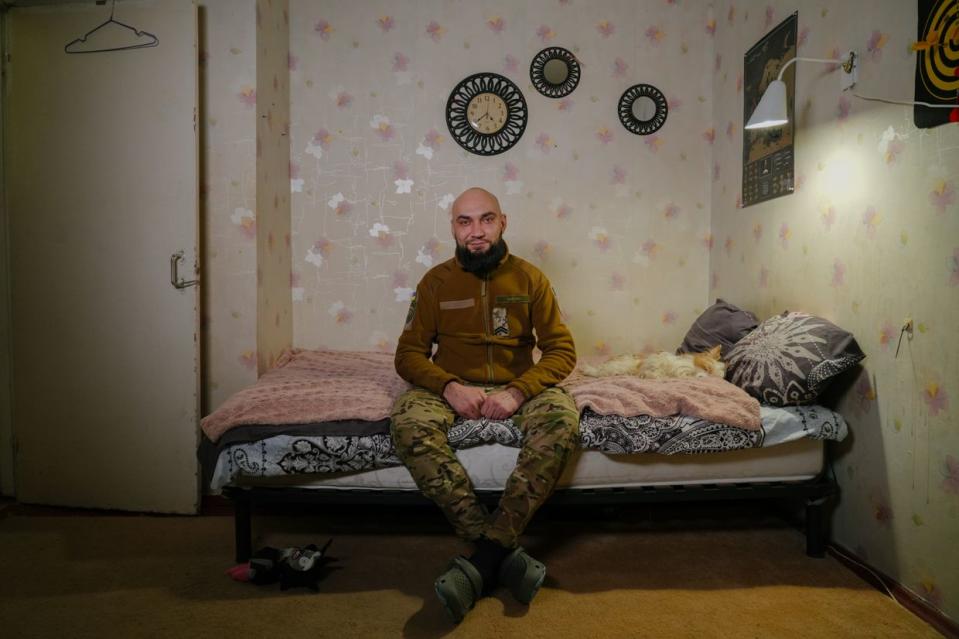
What are the attitudes of various sectors of Ukrainian society to mobilization?
Answer: This is a question that is in equal parts important and complex. For an overview of the topic, I would recommend going back to my piece about it from January, when the first draft law was being discussed. Since then, the core of the problem has remained the same: The military desperately needs more men to stay in the fight for Ukraine's very existence, but the civilian side of the country, both on the level of the wider economy and of the individual, military-eligible man, is less and less keen to provide this. In this environment, the state, despite how politically unpopular it is, is forced to act with an increasingly heavy hand, and what you get as a result is the most perilous point of internal tension that the country has faced since the full-scale invasion.
Those in the military, many of whom volunteered over two years ago and have been serving since then (with no end in sight since demobilization was removed), are often in favor of more draconian mobilization, seeing it as the only just way to winning the war and themselves getting some rest. As for everyone else, while most understand the existential need, things get much trickier when they begin to affect you personally, whether it's you, your friend, or your family member that could be mobilized against their will. – Francis Farrell, reporter
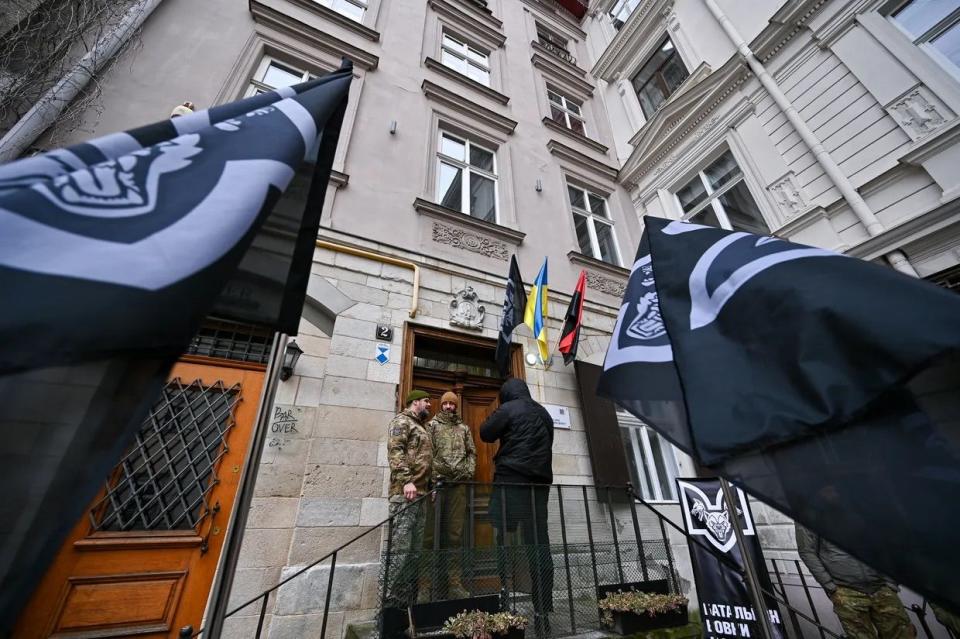
What do people in Ukraine wish that President Zelensky would do differently moving forward?
Answer: The main problem for Ukraine fighting this existential war is the lack of manpower at the front and decreasing motivation in the rear. The country's survival depends on the ability of President Volodymyr Zelensky and his close circle to solve this problem.
The main issue is that the army doesn't look like an appealing career option for people in the rear. In an ideal world, all men aged 18 to 60 would just volunteer and go fight, but that's not how it is, and the state needs to make sure that people see the army as a well paid opportunity, not a punishment.
And for those already fighting, it feels like they are doing the heavy lifting while many in the country are able to live a comfortable life. And they are correct. For this, there needs to be higher wages, an ability to choose brigades where to serve or transfer, proper long-term rest for those at the front, and a clear understanding of when drafted soldiers will be able to go home. A demobilization law needs to be discussed.
Corruption in the military – recruitment offices and agencies that are tasked with procurement – needs to be severely punished for people to feel that the state is on their side.
Frankly, all these problems won't be solved, but they need to be addressed one way or another, because the situation becomes more and more critical daily. – Oleksiy Sorokin, deputy chief editor
Read also: Ukraine struggles to ramp up mobilization as Russia’s war enters 3rd year
Are Ukrainians in the temporarily occupied territories being forced to fight on the enemy side? If so, are there strategies to make it easier for them to cross over to Ukraine's side?
Answer: Russia has reportedly conscripted tens of thousands of Ukrainian citizens in the occupied territories – a war crime according to the Geneva Conventions.
Russia started forced conscription in occupied parts of Donetsk and Luhansk oblasts a week before a full-scale invasion in 2022. Several waves resulted in high casualties among poorly trained and equipped Ukrainians that Russia reportedly uses as cannon fodder. Many of them are believed to have been killed in action, as the Russian forces use these men to expose Ukrainian artillery positions and to protect units recruited inside Russia.
As Russian battlefield casualties grow, Moscow seeks to expand its army to up to 1.5 million people. Pursuing the plan, Russia recently launched a conscription campaign in Ukraine's occupied south, targeting Ukrainians as young as 18-year-olds.
Read how a 20-year-old escaped the Russian army after front-line deployment or how some of the conscripted are captured on the battlefield and await fate in a POW camp.
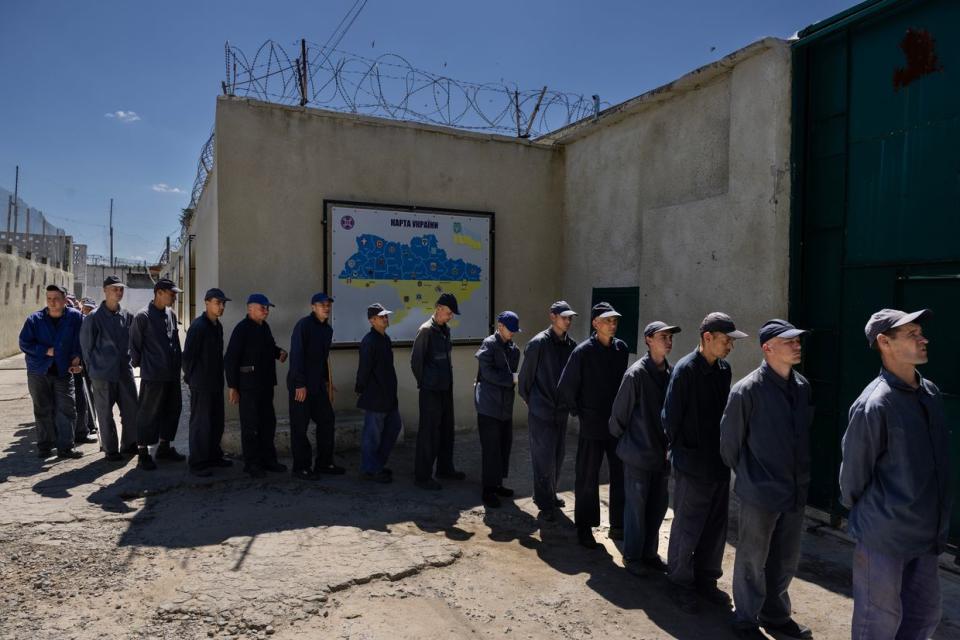
Under Ukrainian law, forcibly conscripted Ukrainians caught while fighting for Russia can face lengthy prison sentences and even high treason charges for betraying their country. There are those who fled the Russian forced conscription campaign. They also told the Kyiv Independent their stories.
Ukrainians living under occupation have no option to flee the territory except to cross into Russia through a Moscow-controlled border. For those who want to flee Russia, Ukraine keeps the sole border crossing point in Sumy Oblast open. Despite the area being under near-daily Russian attacks, some Ukrainians are using the Pokrovka-Kolotilovka crossing to return from Russia. The border crossing only allows people in; no one can cross into Russia.
Ukrainians conscripted into the Russian army can also surrender using Ukraine's hotline – "I want to live" – that offers support to those who don't want to fight. Since forcibly conscripted Ukrainians in Russian-occupied territories are wearing Russian military uniforms, identifying them on the battlefield is unrealistic. However, when deployed, they can contact the surrender hotline, share their location, and proceed to surrender with the guidelines from the Ukrainian side.
Often, Ukrainian drones guide those Ukrainians or Russian soldiers through the minefields toward the spot of surrender. – Alexander Khrebet, reporter
How is the unfreezing of Russian funds going?
Answer: The seizure of frozen Russian assets is now off the table, according to the Financial Times. Despite U.S. President Joe Biden approving their confiscation in the U.S. for Ukraine's benefit two weeks ago, Western leaders are too hesitant to go ahead, likely out of fear of repercussions. Instead, the G7 is looking at how to utilize the profits earned from the assets, which is much more popular. Discussions are still in process. The EU also signed off on a plan to allocate profits to Ukraine – around 3 billion euros a year. Sign up for our Ukraine Business Roundup newsletter to follow the progress. – Dominic Culverwell, business reporter
Read also: Explaining Washington’s REPO Act that could kick-start the confiscation of frozen Russian assets
What are the latest estimates of the costs of rebuilding Ukraine?
Answer: According to the latest World Bank report in February, Ukraine's reconstruction will cost $486 billion, up from $411 billion last year. Direct damages to housing and infrastructure comes to $152 billion. You can read more here. – Dominic Culverwell, business reporter
How would the supply of long-range ATACMS change the course of the war?
Answer: At this point in this war it is important to ground oneself in reality and understand that in the war of infantry, artillery, trenches, and drones that we have in front of us, no single longer-range weapon system is going to make or break how the fighting goes on the ground.
There is a lot that we still don't quite know about the supply of long-range ATACMS to Ukraine: We don't know, for example, whether or not there have been restrictions placed not only on hitting Russian territory but also something like the illegally-built Kerch Bridge to occupied Crimea or ships of the Black Sea Fleet. I mention those because those are what ATACMS were initially hyped up to be used against, but in several weeks of Ukraine apparently having them, there have been no such hits.
We also don't have enough data to understand properly how effective Russian air defense and/or jamming has been against the missiles. While I am confident that we will occasionally see news of high-value targets being taken out by ATACMS over the coming months, it is worth remembering that, at the end of the day, this war is being fought first and foremost with shells, drones, and soldiers. – Francis Farrell, reporter
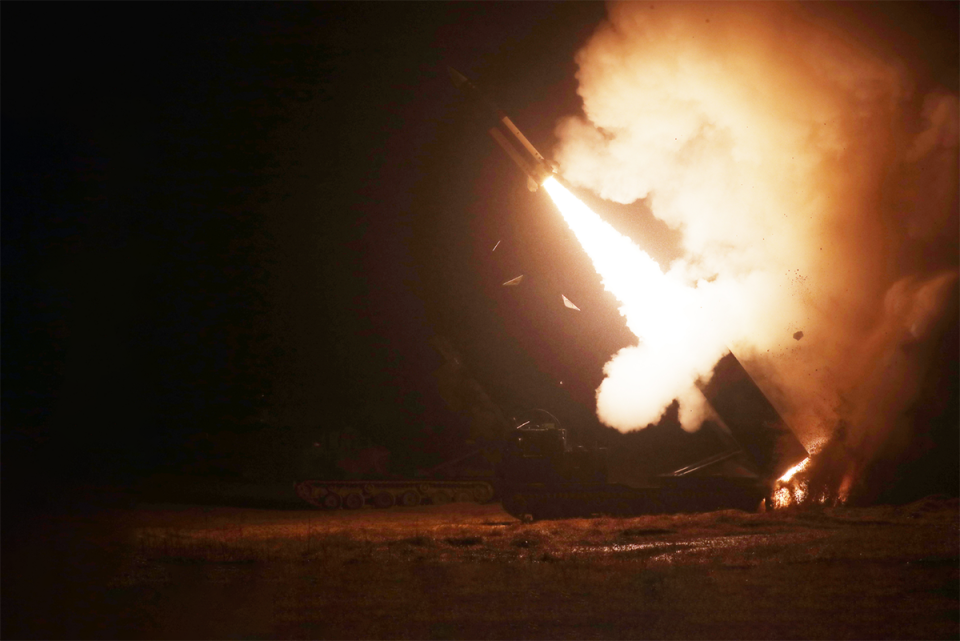
To what extent is Ukraine's political leadership – and the general population – contemplating some sort of settlement to end the war, given the obvious difficulties in getting required support required from the West?
Answer: It's probably one of the hardest questions to answer. Publicly, the majority of the Ukrainian population is against any concessions to Russia.
According to a February poll by the Kyiv International Institute of Sociology, 72% of Ukrainians are ready to endure war for as long as it takes. A similar poll by Rating Group showed that 85% of Ukrainians believe that the country will be able to fend off Russia's attack and ultimately win the war. Obviously, without foreign financial and military support, everything can change. According to the same poll, only 19% of Ukrainians believe that a victory is possible without foreign aid.
In an off rec meeting with members of the president's office that I had earlier last week I was reassured that Ukraine isn't pursuing a peace deal unfavorable for the country, and the government is attempting to bring more countries onboard with the Ukrainian Peace Formula which circles around one main point – no territorial concessions to Russia.
At this point, I believe them. – Oleksiy Sorokin, deputy chief editor
Sign up for our newsletter
Ukraine Weekly By Olga Rudenko
We’ve been working hard to bring you independent, locally-sourced news from Ukraine. Consider supporting the Kyiv Independent.

